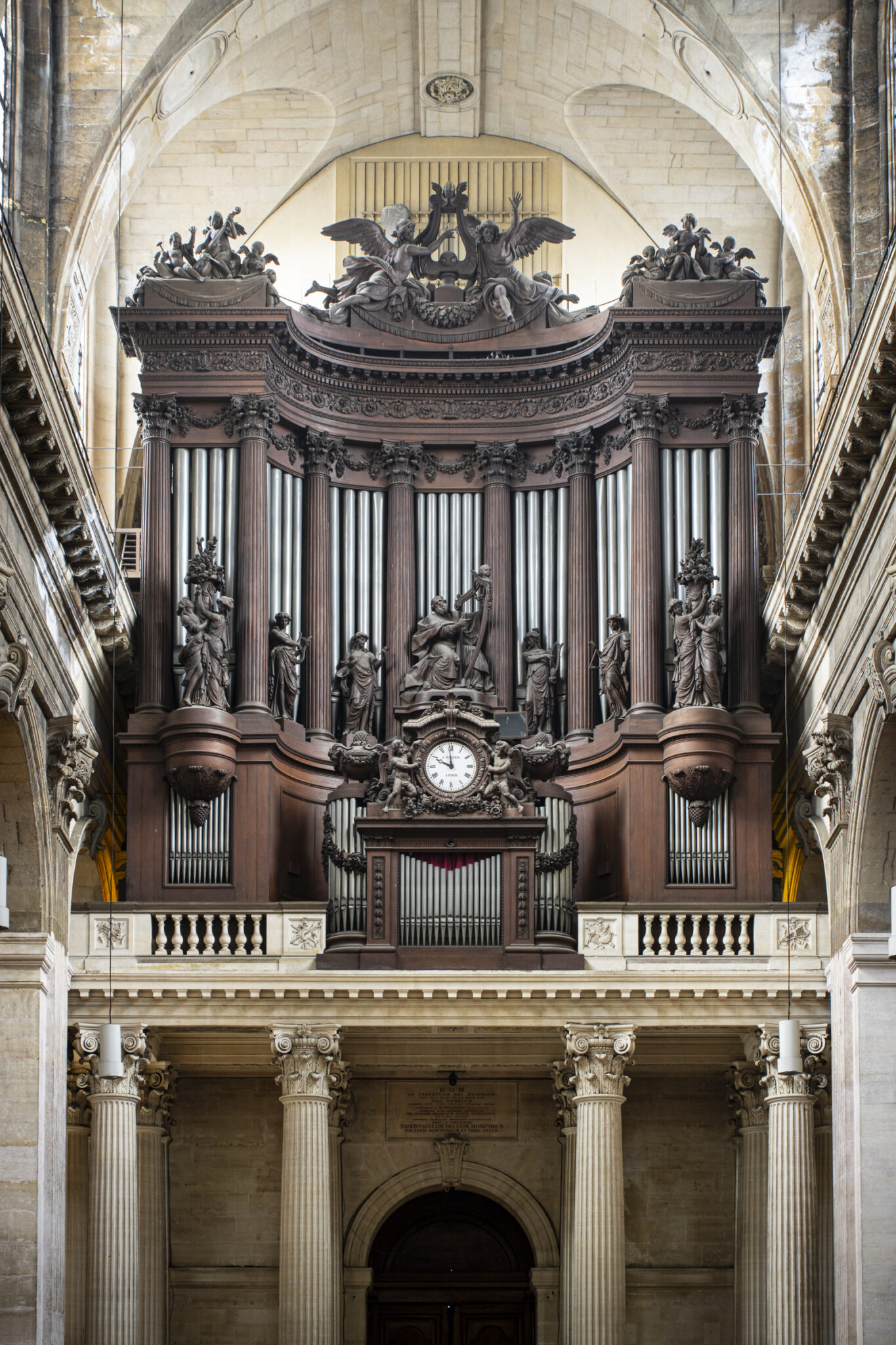The Saint-Sulpice Organs: Why do they sound so different?
Saint-Sulpice is home to two organs, the choir organ and the grand organ, recognized as national monuments. As visitors can attest, the Saint-Sulpice organs have a distinctive quality that sets them apart from all other organs. This uniqueness is rooted in the history of the instruments. While there are records of organists in Saint-Sulpice preceding the 1600s, the grand organ we know today was originally built by François-Henri Clicquot in 1781, becoming one of the largest organs in France and renowned throughout Europe. Decades later, Aristide Cavaillé-Coll reimagined the instruments. The organs are a palimpsest of François-Henri Clicquot’s instrument from the 18th century, a link between the older art and the new.
After the renovation, the grand organ, the undisputed star of Saint-Sulpice, stands at 43 feet (13 m) tall and has over 7,000 pipes with Barker levers. With 102 stops, the organ’s distinctive curved terraced console requires two assistants to manage the original registrations—an operation that almost looks as complicated as flying a plane.

This historic lineage is central to the organs’ unique sound. The organs are virtually untouched from Cavaillé-Coll’s renovation, so playing them today is almost as it was in 1862, an exceedingly rare case. The rich sound is distinctive not only because of Cavaillé-Coll’s design, but that time itself has colored the organ’s performance. The aging process has become a part of the tonal quality, giving it a more noble, grand sound.
Added to the Saint-Sulpice organs’ splendor is the acoustic space of the church itself, the largest in Paris. The lineage of organists of Saint-Sulpice is commemorated with a reverence one would accord to saints or nobles. Each Sunday, the offices are graced by the music of iconic composers.
Two organists and composers, Charles-Marie Widor (organist between 1870–1933) and Marcel Dupré (organist between 1934–1971), have had a major role in shaping the sound of the Saint-Sulpice organs. Their legacy has been carried on by organists of unparalleled talent. In early 2023, maestro Daniel Roth, titular organist since 1985, was succeeded by Sophie-Véronique Cauchefer-Choplin, and Karol Mossakowski.
Karol Mossakowski: One of the two titular organists of Saint-Sulpice
Mossakowski’s musical career was first nurtured at home, as his father is an organist. Born in Poland, Karol was inspired by the French musical tradition from a young age, listening to the likes of Ravel, Widor, and Debussy. Wanting to immerse himself in this music, he moved to France, where he studied at the Conservatoire National Supérieur de Musique et de Danse de Paris. He has been at Saint-Sulpice since February 2023, yet playing the organ each week feels like “making a new discovery every time.”
“Playing an organ that saw the birth of this music, knowing that all these composers touched this instrument, the organ is like a time machine. It teaches you how to really play 19th and 20th century music. It demands to be played in a certain way,” Mossakowski reflects.
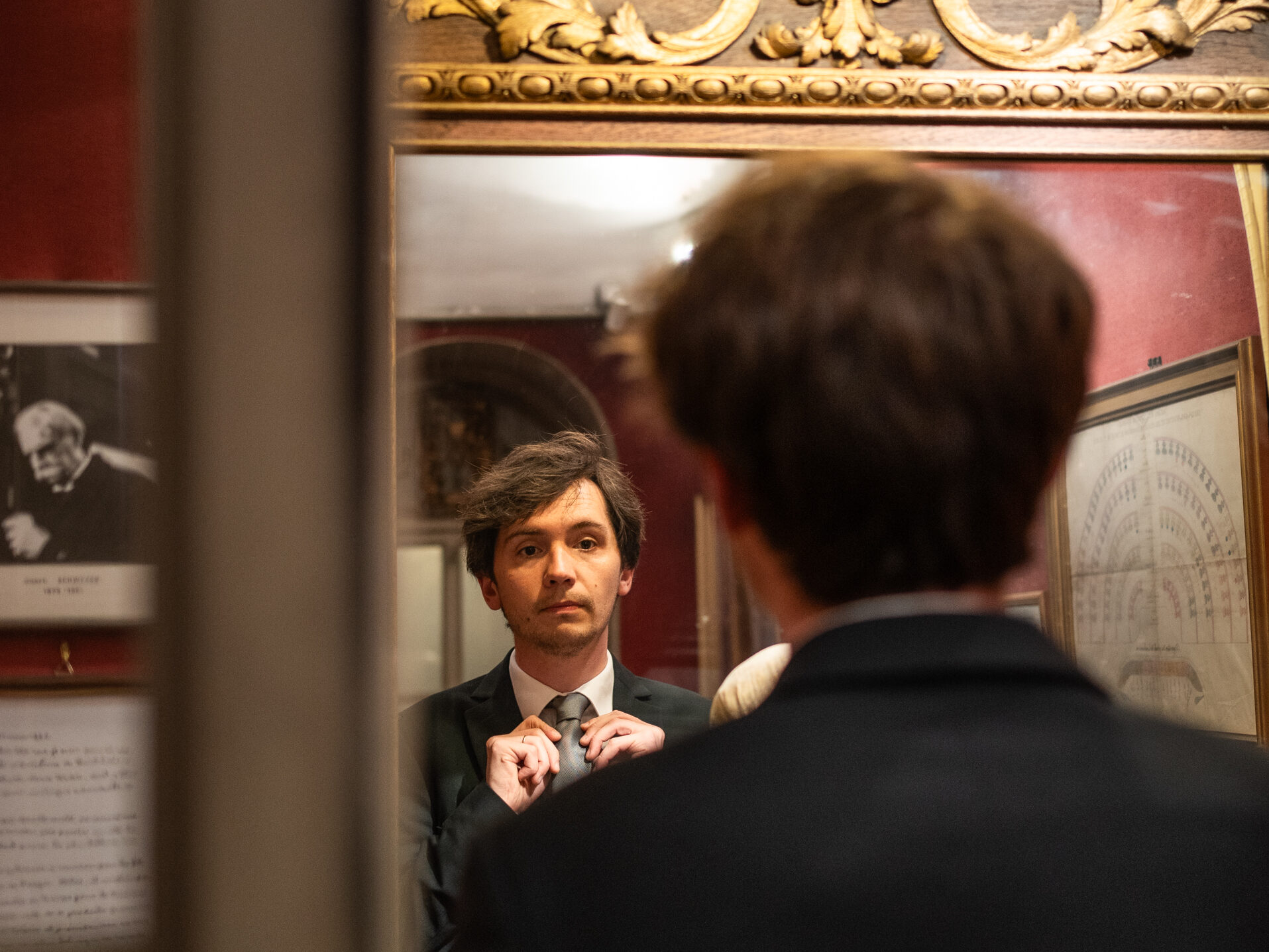
The first day he came to Saint-Sulpice, climbing the 67 steps to the console, he had an exceptional feeling. “I felt a weight fall on my shoulders, and all of a sudden, I saw the faces of all these great organists that preceded me, and a thought came to me: it’s now up to you to carry on everything they’ve contributed to the music of this place. It was both a very surprising moment for me, and on the other hand, a very encouraging one, because I see it as a mission for life, to keep this instrument alive, and all the legacy it has left behind,” he shares.
The Saint-Sulpice organ is much more than an instrument to musicians and music lovers around the world. It’s an irreplaceable masterpiece brimming with heritage, discovery, and innovation. So much so, that Saint-Sulpice has led a long-term initiative to make its music even more accessible and sustainable for generations to come.
Reaching Larger Audiences through Tech-boosted Concerts
The Saint-Sulpice organ and its organists have enjoyed international acclaim for hundreds of years. International tours, partnerships with schools and universities around the world, and of course concerts at Saint-Sulpice have contributed to a large audience and network of devotees.
A special relationship with the United States was forged in the early year of 1893, when The Musical Courier columnist Fanny Edgar Thomas applauded Charles-Marie Widor’s Saint-Sulpice organ mastery in her column “Organ Loft Whisperings.” Major composers like Marcel Dupré enjoyed successful tours in the US. Today, Saint-Sulpice often invites American organists, and American students from universities across the country come to study on the incomparable instruments of Saint-Sulpice. The Yale Orchestra and Juilliard School performed visiting concerts in the last few years.
Visitors from around the world travel to hear the organs, and locals are drawn in by the music resounding beyond the church walls. Interest in the organ concerts is exceedingly high. In 2017, the AROSS team decided to implement an innovative live-streaming system to allow everyone the experience of an organ concert at Saint-Sulpice.
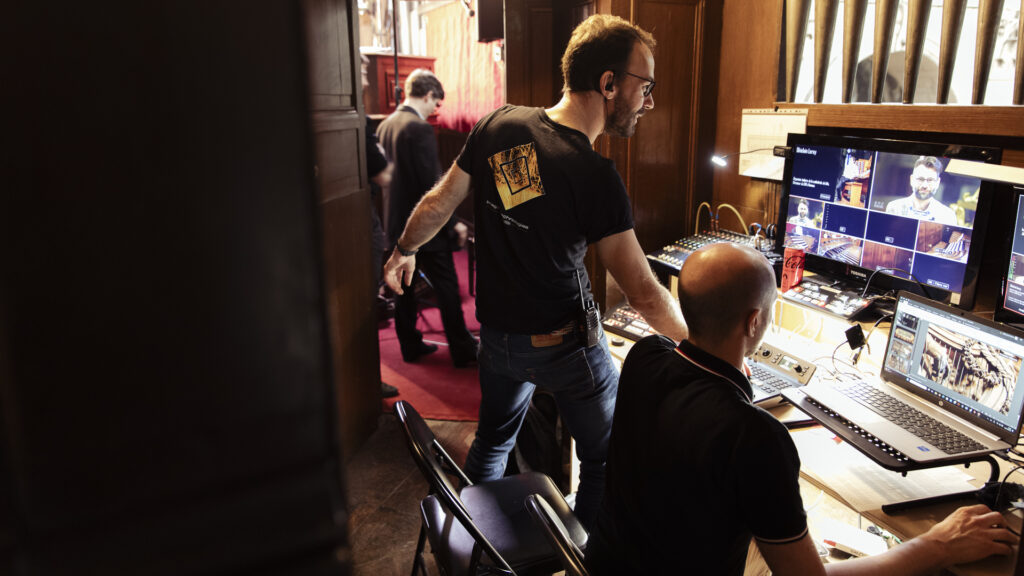
Concerts are now projected on a large screen within the church, and live-streamed on YouTube to reach wider audiences. Saint-Sulpice was one of the first, and to date still one of the few, churches to offer such viewership experiences. When asked what inspired this innovative step, Pierre-François Dub-Attenti, President of AROSS, responded with one unwavering conviction: “Music is about sharing. Hearing the organ played each week is a privilege, one that we wanted to share with all those who can’t be here with us in person.”
Today, viewers from all over the world tune in to each concert. Those who missed it can relive the streams online, as they can all be found on Dub-Attenti’s YouTube channel. To stay up to date on future live streams and concert dates, visit the AROSS website.
Nurturing the Next Generation of Musicians and Music Lovers
Saint-Sulpice is a place of creation and innovation as much as it is about history and heritage. The musical team prioritizes choir and orchestra music in performances in artistic blends unique to Saint-Sulpice, seeking to highlight today’s composers and new talent.
Among the artists invited are well-known and established musicians, but also young artists from different parts of the world. Masterclasses held at Saint-Sulpice offer a unique opportunity to learn classical music within the very same walls where much of it was created. A concert at Saint-Sulpice is an incomparable experience for an emerging musician: the acoustics, the mechanics—not to mention learning to master the legendary Grand Organ itself. Young musicians are drawn by the chance to play and experience the instrument commanded by so many iconic composers.
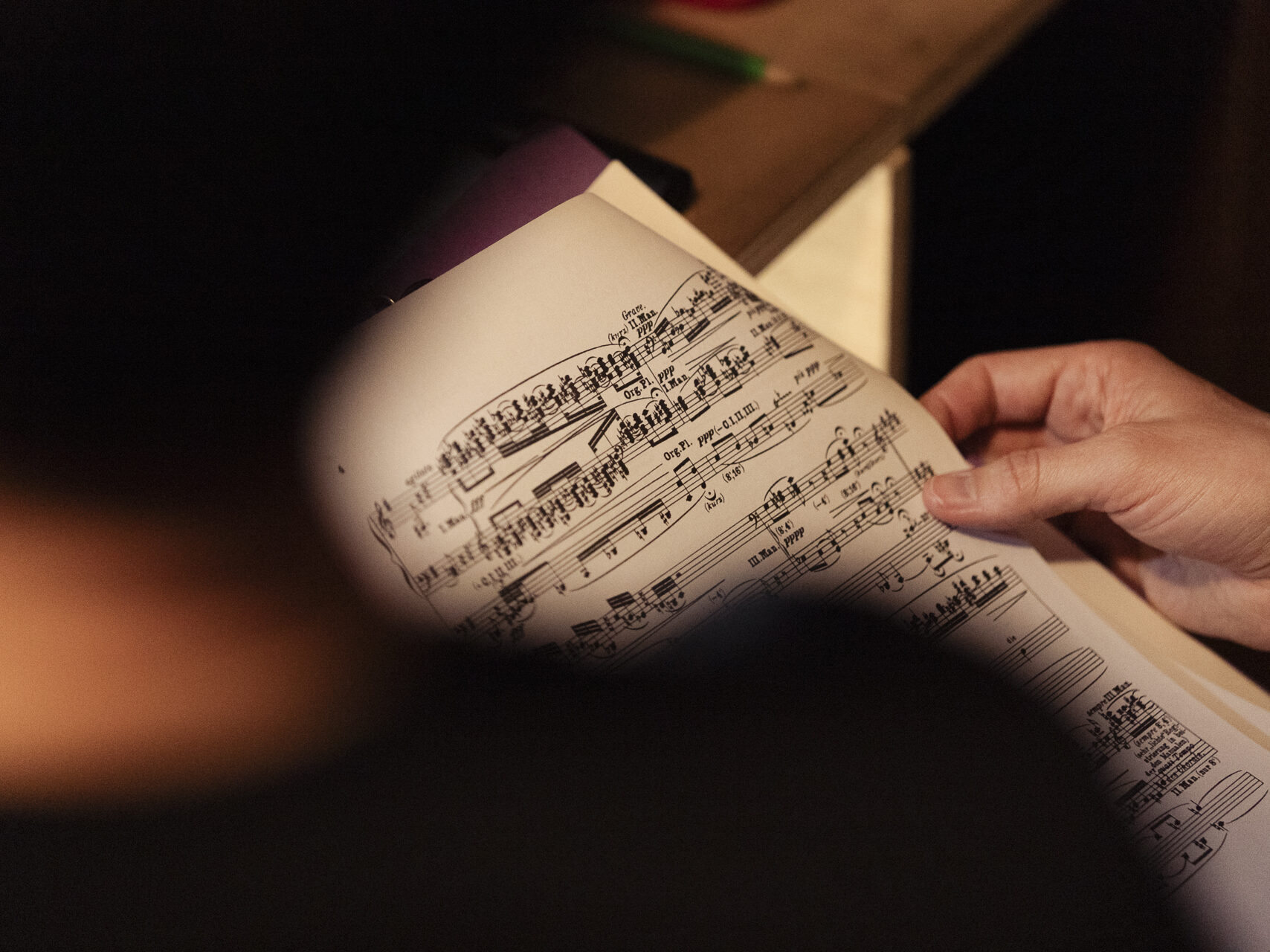
“Students of organ music from all over the world dream of coming to Saint-Sulpice the same way a pianist dreams of playing Frédéric Chopin’s piano—there are so few instruments in the world that give the same experience of authenticity of 18th-century music,” explains Mossakowski, who was once a visiting student at Saint-Sulpice himself.
To support and encourage new talent, AROSS leads several initiatives that nurture new artistic creation. These include a compositional competition organized in 2021 for the organ and choir, creating space for contemporary works by young artists and ensuring organ music remains alive and vibrant. Another project enlisted high school students in Paris to create short films for a series of ciné-concerts, a French cinematic tradition where silent films are accompanied by live music, in this case by improvisational performances.
Connecting with younger listeners and musicians is a major priority for AROSS, whose mission is to not only keep the legacy of these grand instruments alive, but to expand opportunities to experience the organ’s music firsthand.
Supporting the Organs: How to Keep the Music Alive
Moving forward, AROSS envisions offering more diverse and exciting performances, in particular by inviting more organists, choirs, and orchestras from around the world to take part in unique musical productions. They also seek to continue broadening their streaming capabilities to allow as many people as possible to experience organ music, prioritizing helping those without means to hear organ music and share in this musical heritage. Future plans for more educational programs and youth initiatives are being drawn up. But they cannot make this vision a reality without support.
In order to organize concerts, Saint-Sulpice relies entirely on charitable donations. Inviting musicians, choirs, and orchestras from around the world is costly.
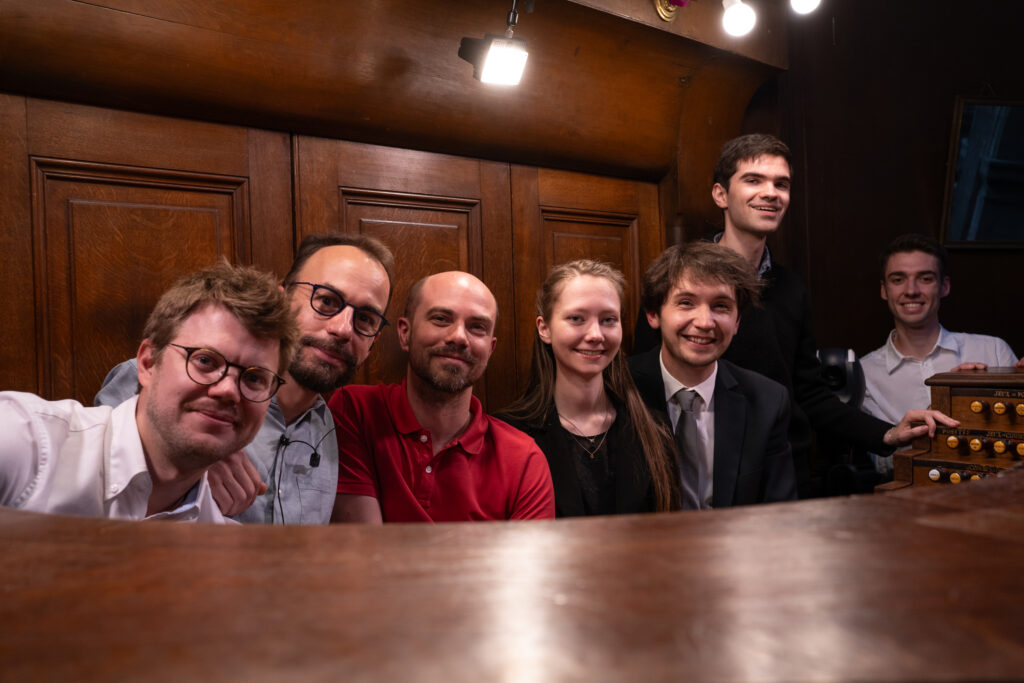
The United States is the second-largest demographic in terms of donations. AROSS has partnered with Friends of Fondation de France, allowing US-based donors to support the organs of Saint-Sulpice through tax-deductible donations. Friends of Fondation de France is proud to support AROSS in the stewardship and promotion of this irreplaceable musical heritage.
To learn more about AROSS and the Saint-Sulpice organs, visit the AROSS page on our website. To support the organs and the concerts at Saint-Sulpice, consider making a tax-deductible donation. Together, we can help Saint-Sulpice fulfill its potential and heritage as a cultural meeting place for people from all walks of life, united through the transcendent experience of the Saint-Sulpice organs’ music.
Cover Photo: Antoine Thiallier

